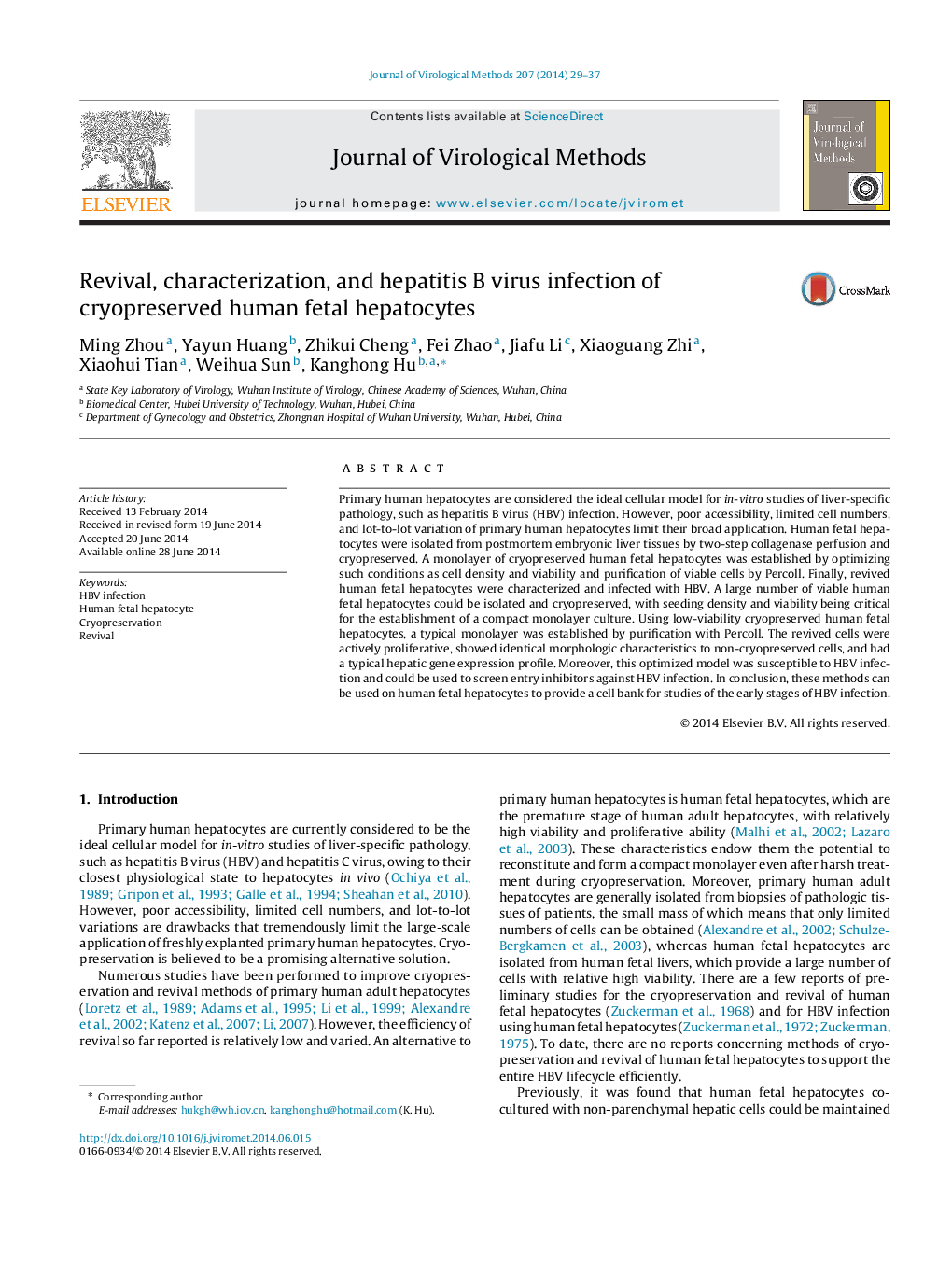| کد مقاله | کد نشریه | سال انتشار | مقاله انگلیسی | نسخه تمام متن |
|---|---|---|---|---|
| 6133585 | 1593469 | 2014 | 9 صفحه PDF | دانلود رایگان |
عنوان انگلیسی مقاله ISI
Revival, characterization, and hepatitis B virus infection of cryopreserved human fetal hepatocytes
دانلود مقاله + سفارش ترجمه
دانلود مقاله ISI انگلیسی
رایگان برای ایرانیان
موضوعات مرتبط
علوم زیستی و بیوفناوری
ایمنی شناسی و میکروب شناسی
ویروس شناسی
پیش نمایش صفحه اول مقاله

چکیده انگلیسی
Primary human hepatocytes are considered the ideal cellular model for in-vitro studies of liver-specific pathology, such as hepatitis B virus (HBV) infection. However, poor accessibility, limited cell numbers, and lot-to-lot variation of primary human hepatocytes limit their broad application. Human fetal hepatocytes were isolated from postmortem embryonic liver tissues by two-step collagenase perfusion and cryopreserved. A monolayer of cryopreserved human fetal hepatocytes was established by optimizing such conditions as cell density and viability and purification of viable cells by Percoll. Finally, revived human fetal hepatocytes were characterized and infected with HBV. A large number of viable human fetal hepatocytes could be isolated and cryopreserved, with seeding density and viability being critical for the establishment of a compact monolayer culture. Using low-viability cryopreserved human fetal hepatocytes, a typical monolayer was established by purification with Percoll. The revived cells were actively proliferative, showed identical morphologic characteristics to non-cryopreserved cells, and had a typical hepatic gene expression profile. Moreover, this optimized model was susceptible to HBV infection and could be used to screen entry inhibitors against HBV infection. In conclusion, these methods can be used on human fetal hepatocytes to provide a cell bank for studies of the early stages of HBV infection.
ناشر
Database: Elsevier - ScienceDirect (ساینس دایرکت)
Journal: Journal of Virological Methods - Volume 207, October 2014, Pages 29-37
Journal: Journal of Virological Methods - Volume 207, October 2014, Pages 29-37
نویسندگان
Ming Zhou, Yayun Huang, Zhikui Cheng, Fei Zhao, Jiafu Li, Xiaoguang Zhi, Xiaohui Tian, Weihua Sun, Kanghong Hu,